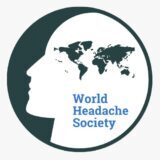Cervicogenic headaches are 2-3 times more common in females. Many years ago, it was more of the middle-aged and elderly people who were afflicted, but due to poor ergonomics in use of technology, more people are diagnosed from all ages, especially adolescents and young adults.
Cervicogenic headache is a common form of headache caused by structures in the neck. Cervicogenic headache is usually one-sided, begins in the neck and spreads to the region of the eyes, forehead and temples.
Cervicogenic headaches originate from diseases of the spine or the surounding joints. There may also be irritation of the occipital nerves which are the nerves on the back of the head. Mostly, it is the upper 3 cervical vertebrae that are implicated.
Headaches involving may also be caused by involvment of the trigeminal nerve system which are the nerves of the front of the head. The spinal root of the trigeminal nerve carries the sensory and pain fibers of the face and meninges. They are connected to the cervical nerves. Therefore conditions such as migraines can also present with neck pains.
Neck pain per se can also result from long-term sedentary work, phone/tablet gazing, or driving.
These lead to muscle imbalance in the neck and back muscles, also known as Upper-Crossed Syndrome.
Symptoms:
Nape pain
• Limitation of head and neck movements
• Pain above or behind the eye
• Facial pain
• Temple pain
• Forehead pain
• Shoulder pain
• Temporomandibular pain
Some of the following conditions pose an increased risk for cervicogenic headaches:
- Cervical spine degeneration
- Cervical disc problems
- Cervical spine alignment problems
- Vertebral involvement in rheumatic diseases (rheumatoid arthritis, ankylosing spondylitis)
- Head/ neck trauma
- Motor vehicle accidents (whiplash injury)
- Non vehicle accidents (direct neck trauma, secondary trauma to fall)
- Head trauma (falling on the back, falling on the head)
- Problems of the neck and shoulder muscles due to
- Bad posture
- Sedentary work
- Holding the neck in awkward positions (such asplacing the phone between the head and shoulder while talking)
- One-sided carrying of heavy bags
Physical Examination may
Limitation of neck movements and pain on movement
• Pain aggravated by head movements
• Sensitivity in the neck muscles with manual pressure
• Trigger points in neck and shoulder muscles
• Tension in neck, back, and shoulder muscles
• Weakness in the deep cervical flexor muscles (muscles that tilt the head forward)
• Triggering/aggravation of pain with pressure applied to the nape or neck
• Postural problems like upper-crossed syndrome
Treatments:
Exercise
- Exercise
- Posture correcting
- Core muscle strengthening
- Neck stretching and strengthening
- Posture correcting
- Low intensity whole body exercise
- Yoga
- Pilates
- Walking
- Tai Chi
- Swimming
- Resolving sleep problems, observing sleep hygiene, correcting lying posture and changing sleep environment like hard bed, low and soft pillow
- Stress management with:
- Psychotherapy
- Cognitive therapy
- Meditation
- Yoga
- Physical therapy like TENS, Manual therapy, cryotherapy, laser
- Medications
- Simple painkillers, for short term worsenings
- Muscle relaxants
- Neuropathic pain medications
- Targeted Injections: Facet joint injection, trigger point/myofascial injection, occipital nerve block
- Acupuncture
- Botulinum toxin injections
Daily Life Tips
- Avoid single-sided, heavy handling (bag, baby)
- Sit in the proper position at your desk
- Feet and knees on the floor at 90 degrees
- Arm resting on chair armrests
- Shoulders back, sitting with upright back
- The monitor to be slightly below eye level
- The chair should support the back
- Frequent breaks for those working at a desk; walk around or do stretches
- When talking on the phone, hold it with your hand and change the side you are talking to intermittently, or use headphones/Bluetooth; do not place between shoulder and head
- Reduce technology addiction; look at the phone for a short time, keep it close to eye level while using
- Protect the neck and shoulders and keep them warm in cold/air-conditioned environments
- Avoid wearing high heels/wear low heel shoes (since high heels put the body weight set point forward, the knees are bent to allow the body to stand upright, increasing the back and neck troughs and leading to neck pain)
